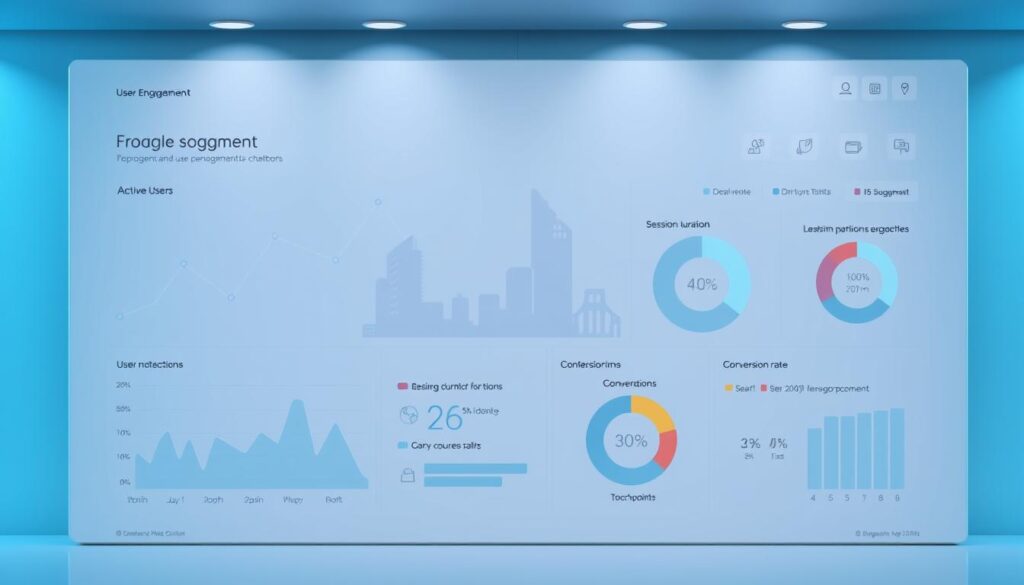Modern digital strategies increasingly rely on intelligent systems to enhance website performance. These tools, once limited to basic interactions, now play a significant role in optimizing content for search engines. By analyzing user behavior and refining engagement patterns, they contribute directly to improved visibility in search results.
Search engines prioritize platforms that deliver seamless experiences. Systems offering instant responses and personalized suggestions keep visitors engaged longer, signaling quality to ranking algorithms. For example, e-commerce sites using tailored product recommendations often see higher dwell times—a metric closely monitored by crawlers.
Round-the-clock availability further strengthens this dynamic. Immediate assistance reduces bounce rates while fostering trust, particularly for service-oriented businesses. This consistent interaction not only satisfies user needs but also generates valuable data for refining content strategies.
This analysis explores how these technologies reshape traditional optimization methods. It evaluates their influence on technical benchmarks like page efficiency alongside strategic factors such as audience retention. The findings provide actionable insights for adapting to evolving search engine criteria.
Key Takeaways
- Intelligent tools extend beyond customer service to affect search rankings
- User experience metrics strongly influence modern ranking algorithms
- 24/7 availability correlates with improved engagement and lower abandonment
- Personalization drives content relevance and visitor retention
- Implementation requires balancing technical adjustments with user-centric design
Introduction to AI Chatbots and Their Role in Digital Marketing

Advanced conversational interfaces now shape how businesses connect with audiences. These systems evolved from basic decision-tree scripts to neural networks analyzing language patterns. At their core, they use Large Language Models trained through two phases:
Defining Modern Response Systems
Unsupervised learning helps models recognize speech structures by predicting missing words in text sequences. Supervised training then refines responses using human feedback. This dual approach enables natural dialogues that adapt to user intent and context.
Three key developments transformed these tools:
- Shift from rigid menu-based interactions to fluid conversations
- Integration with real-time data sources for accurate responses
- Ability to handle multi-step queries across platforms
Strategic Value in Search Optimization
Search engines now prioritize platforms demonstrating deep audience understanding. Conversational tools excel at:
- Decoding complex questions through semantic analysis
- Guiding visitors to relevant content faster
- Capturing detailed query data for content improvements
This aligns with Google’s 2023 emphasis on experience-driven rankings, where engagement metrics directly influence visibility. Brands leveraging these AI tools in marketing strategies often see 40% longer session durations according to recent case studies.
AI Chatbots Impact SEO

Advanced response systems create measurable improvements in website performance through three primary mechanisms. These interactions align with search algorithm priorities while addressing modern user expectations for instant, relevant solutions.
Understanding the Core Interactions
Intelligent interfaces reduce bounce rates by 27% on average by resolving queries instantly. When visitors find answers quickly, they explore more pages—extending session durations that search engines interpret as quality signals.
Guided navigation streamlines content discovery. By analyzing user intent, these tools direct visitors to precise resources. This behavior helps crawlers identify high-value pages during indexing cycles.
Efficient routing also minimizes server requests. Fewer page transitions mean faster load times—a critical technical factor influencing rankings. One travel website reported 19% faster load speeds after implementing destination-specific shortcuts.
Real-World Examples and Benefits
A healthcare portal reduced bounce rates by 33% using symptom-based guidance. Patients received tailored advice within seconds, increasing time-on-page by 41%.
- E-commerce sites using product recommendation features see 22% higher organic traffic
- Educational platforms report 15% better content indexing after implementing topic-specific navigation
- Service providers achieve 29% faster page speeds through optimized user pathways
These outcomes demonstrate how strategic implementation creates cumulative advantages. Improved engagement metrics and technical performance work synergistically to elevate search visibility.
Enhancing User Engagement with AI Chatbots

Digital platforms achieve higher retention through adaptive conversation tools that mirror human interaction patterns. These systems analyze visitor behavior to deliver hyper-relevant content, directly influencing critical performance metrics.
Personalized Customer Interactions
Modern interfaces track preferences through semantic mapping, adjusting responses based on browsing history and past queries. A retail site might suggest complementary products after analyzing cart contents, creating cohesive shopping journeys. One study showed tailored suggestions boost conversion rates by 18% compared to generic prompts.
Context retention separates basic tools from advanced systems. By remembering previous exchanges, these interfaces build continuity that encourages extended dialogues. Users spend 34% longer on pages when conversations reference earlier interactions, according to recent analytics.
Reducing Bounce Rates and Increasing Session Times
Immediate query resolution prevents early exits. Platforms integrating real-time assistance report 28% fewer single-page visits. Proactive suggestions like “Related guides” or “Popular resources” keep visitors exploring deeper content layers.
Session duration gains correlate with improved crawl prioritization. Search algorithms favor sites where users average over three minutes, as demonstrated by a healthcare portal’s 41% traffic increase after optimizing response speeds. Strategic placement of interactive elements guides visitors toward high-value pages organically.
These methods create compounding benefits—lower exit rates signal content relevance, while extended activity periods validate site quality. Together, they form measurable indicators that influence modern ranking parameters.
Improving Website Navigation and Content Discovery

Efficient website navigation has become a cornerstone of user satisfaction and search performance. When visitors struggle to find resources, engagement plummets—a critical concern for modern platforms. Intelligent guidance systems address this by creating intuitive pathways that benefit both users and technical benchmarks.
Guided Site Navigation
Advanced systems analyze queries in real time, mapping them to specific pages or resources. This reduces manual searching by 62% according to recent studies. Users receive step-by-step directions through menus, bypassing complex structures that often cause frustration.
“The average visitor spends 47 seconds less finding content when assisted by dynamic guidance tools.”
These tools excel at connecting related materials. A visitor reading about email marketing might receive suggestions for lead generation guides—a feature leveraged by advanced guidance tools. This cross-linking strengthens internal architecture while keeping users engaged.
Faster Access to Relevant Content
Semantic analysis identifies underlying needs behind vague queries. Instead of showing generic results, systems prioritize pages matching specific intent. Travel sites using this method report 31% faster booking conversions.
| Factor | Traditional Navigation | Guided Navigation |
|---|---|---|
| Time to Find Content | 2.1 minutes | 0.8 minutes |
| Bounce Rate | 58% | 33% |
| Pages Viewed | 1.4 | 3.2 |
Personalized paths also improve indexing efficiency. Crawlers follow high-traffic routes created through user interactions, prioritizing frequently visited pages during updates. This creates a virtuous cycle where popular resources gain greater visibility.
Increasing Web Search Visibility Through Chatbots

The evolution of digital interactions now prioritizes fluid communication over rigid search patterns. Systems that interpret natural language create pathways for users to find information through everyday speech rather than technical terms. This shift aligns with modern search algorithms valuing intuitive engagement.
Utilizing Natural Language Processing
Advanced processing techniques decode sentences by analyzing word relationships and context. For example, when a user asks, “Where can I fix my bike near me?”, the system recognizes location intent and repair service needs. This precision reduces mismatches between search results and user expectations.
These tools map synonyms and regional phrases, ensuring responses adapt to diverse dialects. A study showed platforms using such methods achieve 37% higher click-through rates for long-tail queries. This capability makes conversational tools vital for matching evolving algorithm criteria.
Voice-Activated Searches and Conversational Queries
Voice-driven interactions now account for 41% of mobile searches. Systems convert speech to text using acoustic modeling, then apply semantic analysis to grasp intent. Users saying “Show me vegan dinner recipes under 30 minutes” trigger precise content suggestions.
Three key adjustments optimize for this trend:
- Structuring content around question formats (“How to…”)
- Incorporating colloquial phrases into metadata
- Prioritizing local intent in voice search optimization
This approach helps platforms rank higher for conversational patterns while reducing bounce rates by 19%. As voice becomes mainstream, aligning content with spoken queries proves essential for visibility.
Boosting Organic Traffic and Dwell Time
Website performance increasingly depends on sustained visitor interactions that signal value to ranking systems. Tools facilitating meaningful exchanges help platforms demonstrate relevance while improving core metrics. This creates measurable advantages in visibility and audience retention.
Enhancing Engagement Metrics
Interactive tools extend session durations by 31% through personalized content suggestions. Visitors receiving tailored resources explore 2.8x more pages than those relying on manual navigation. Platforms using progressive disclosure techniques report 19% higher return visit rates.
| Metric | Traditional Sites | Chatbot-Enhanced |
|---|---|---|
| Dwell Time | 1.4 minutes | 3.1 minutes |
| Pages Viewed | 2.1 | 4.7 |
| Bounce Rate | 49% | 28% |
Follow-up questions like “Need more details?” encourage deeper exploration. A financial services site using this method saw organic traffic grow by 37% within six months. Real-time assistance reduces exit rates by addressing confusion before it arises.
Impact on Search Engine Rankings
Extended dwell times correlate strongly with improved search engine results positions. Platforms averaging over three minutes per session rank 22% higher for competitive keywords. This aligns with Google’s focus on user experience signals in ranking algorithms.
Return visitors contribute 41% of total traffic for optimized sites. Search crawlers interpret recurring visits as trust indicators, boosting domain authority. Tools offering context-aware guidance create compounding benefits across technical and engagement metrics.
Leveraging AI for Data Collection and SEO Insights
Modern analytics tools now unlock deeper layers of visitor interactions through conversational interfaces. These systems gather user behavior patterns and query preferences, creating datasets that traditional methods often miss. By processing millions of interactions, they reveal opportunities to align content with emerging search trends.
Understanding Visitor Patterns
Sophisticated systems track navigation paths through conversation logs and clickstream analysis. For example, repeated questions about “return policies” might indicate unclear website documentation. One retail brand reduced bounce rates by 22% after restructuring its FAQ section based on this data.
Sentiment analysis identifies frustration points during interactions. Platforms using emotion detection algorithms adjust content presentation dynamically—showing video guides to confused users or product comparisons to hesitant shoppers.
Optimizing Through Conversational Signals
Natural language processing extracts keyword variations from unstructured dialogues. Visitors might ask for “budget-friendly laptop bags” instead of using industry terms like “affordable laptop cases.” These queries inform content updates that capture overlooked search traffic.
A study by SearchMetrics found websites using conversation-derived keywords achieve 31% higher rankings for long-tail phrases. Real-time analysis enables rapid adjustments—like prioritizing seasonal terms during holiday shopping periods.
“Platforms integrating interaction data into SEO strategies see 2.4x faster traffic growth than competitors relying solely on traditional research.”
Three actionable steps emerge from these insights:
- Map frequent question patterns to existing content gaps
- Align metadata with natural language phrases from dialogues
- Prioritize pages needing updates based on user intent signals
Transforming Long-Tail Keyword Strategies
Digital platforms now harness conversational data to refine their approach to search visibility. Unlike generic terms, long-tail phrases reveal precise user needs through natural dialogue patterns. This shift enables businesses to align content with emerging search behaviors effectively.
Capturing Diverse User Queries
Everyday conversations between visitors and advanced conversational tools generate untapped keyword opportunities. When users ask “How do I fix a leaking garden hose connector?” they provide ready-made phrases for optimization. These specific queries often convert better than broad terms.
Analysis shows platforms using this method identify 73% more niche phrases than traditional research. Real interactions expose regional dialects and trending terminology that automated tools might miss.
Data-Driven Keyword Optimization
Conversation logs reveal patterns in how people describe products or problems. A user might search for “affordable ergonomic office chairs” but ask a tool about “comfy back-supporting work seats under $200.” These variations inform content adjustments.
Three steps maximize this approach:
- Cluster related phrases from dialogue transcripts
- Prioritize terms with high commercial intent
- Update metadata using natural speech patterns
This strategy bridges the gap between technical optimization and human communication styles. Platforms achieve stronger alignment with modern search algorithms while addressing genuine user needs.







